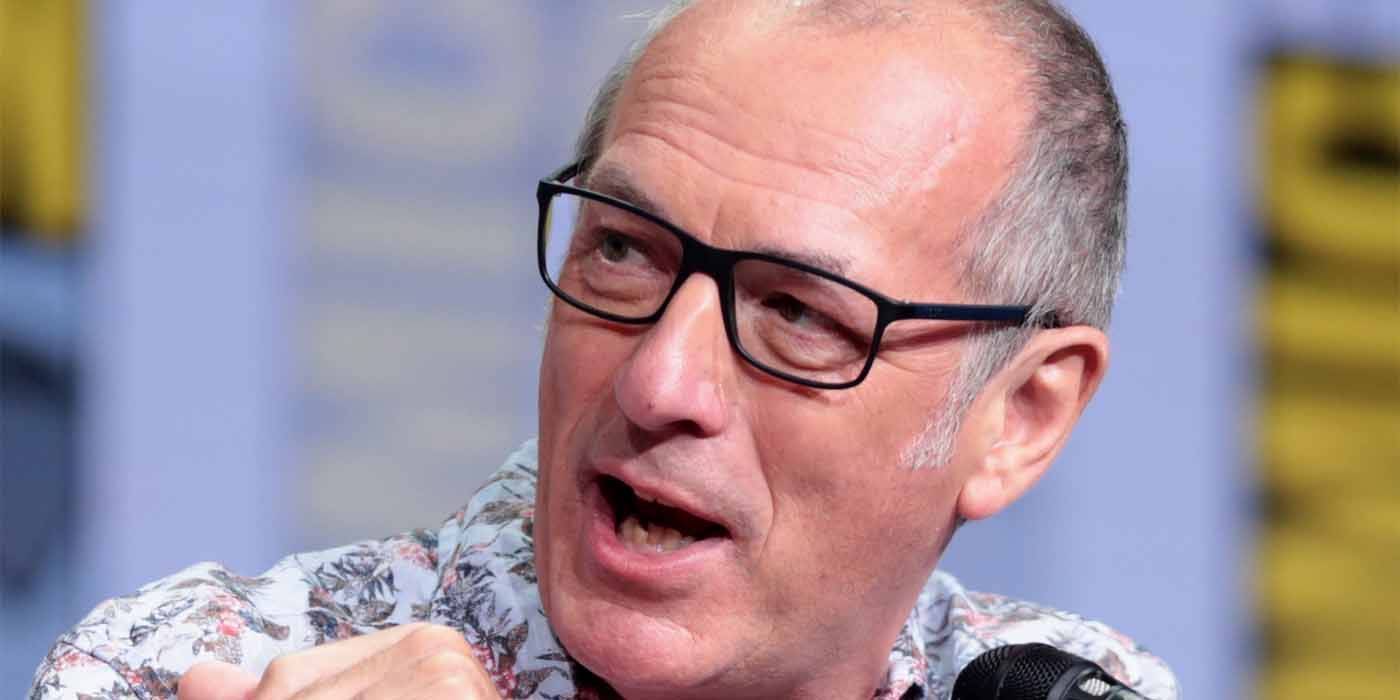At New York Comic Con on Friday, acclaimed artist Dave Gibbons, best known for Watchmen and The Secret Service, was honored with the 2018 Harvey Hall of Fame Award. Ahead of the reception, though, Gibbons reflected on his decades-spanning career in the comic book industry, in a spotlight panel moderated by Karen Berger.
"Everyone already knows Dave's career, so I'm not gonna run it down," Berger said. "I thought it'd be great to ask, how old were you when you realized you wanted to become a comic book artist?"
"I always wanted to do comics," Gibbons said. "That's what I wanted to do since I was seven, eight years old. When I started to see American superhero comics, via Australia, I bought them off the stands and collected them ever since. I love the idea of America, present conditions withstanding, I do love America. And I loved to draw as a kid, loved to trace off American comics and that's how I learned how to do comics."
"My dad always encouraged my reading of comics," Gibbons continued. "Both my grandfathers would send me comics, and my dad got me a copy of Mad."
Gibbons went on to discuss his early schooling in Britain, noting how anything to do with American culture was typically discouraged. However, as a child, his father took him to meet a local artist, and a young Gibbons showed him his drawings based on an issue of World's Finest.
"I think what he must have said was, 'He's got some talent, but these are clearly copied,'" Gibbons said the artist told his father. "In the end, though, [my dad] realized I did draw those pages, they weren't just copied."
Berger then asked if Gibbons was completely self-taught as an artist, but he explained that he did take classes.
"Once I got re-interested in comics again, I'd go around to all the secondhand bookshops and pick up all the comics I'd missed out on."
"The first job I ever got paid money for was lettering," Gibbons said. "It was so badly done that they nearly got the sack, and were told never to hire me again."
"I would also like to point out," Gibbons added, "that when Alan Moore and I started Watchmen, we always intended to get it out on time. However, the last issue was, I think, two months late? Still, not as late as Camelot 3000."
Gibbons also explained the lesser known hardships of getting into comics, such as not knowing how to draw a taxicab or Scotland Yard.
"If you want to get into comics, you have to know how to draw anything," he said.
Berger then asked whose work Gibbons was influenced by.
Jack Kirby, Steve Ditko, Carmine Infantino, Joe Kubert and Will Eisner were just a few of the names Gibbons cited, calling them "the usual suspects." He also noted he was always a DC guy and not a Marvel guy.
Speaking of DC, Gibbons discussed his first work for the publisher.
"I came to a New York comic convention in 1973," he said. "I left my samples at DC with a young gentleman called Paul Levitz. I was given the samples back with a note that said 'Thank, but no thanks.'" Gibbons, of course, would go on to work for DC, though, shortly after, doing Green Lantern Corps backups. "I was in," he said. "I was there."
"And one night, I got a call from Len Wein," Gibbons added. "He asked if I had the phone number for Alan Moore. They offered Alan Moore Swamp Thing, and the rest was history."
Gibbons then discussed how he and Moore collaborated on Watchmen, noting that the story was frowned upon by DC, at least when Moore proposed using the Charlton Comics characters. "They told him to use his own characters," Gibbons said.
He also discussed how Moore helped his dream of drawing Superman come to fruition.
"Julie Schwartz called and said, 'Hey, how'd you like to draw Superman?'" Gibbons recalled. "I said yes, and he said, 'Who do you want to write it?'" Moore would go on to write the story, titled "For the Man Who Has Everything."
As for characters Gibbons hasn't worked with, he noted that he's "had a chance to play with all the toys."
"I got to work with Will Eisner on The Spirit," he added. "And I got to work with Alan Moore. I've really gotten to play with all the characters. And to create Martha Washington with Frank Miller. She's really one of my favorite characters. And it might be a little premature, but you might be seeing Martha again."
Finally, Berger asked if Gibbons ever thought the comic book medium would become what it is today.
"Not at all. All of the sudden, something gets picked up by Hollywood and you've made it," he said. "It used to be, you would go to conventions, and that was beyond anything I could have imagined."
A fan asked how long it took Gibbons to design the squid from Watchmen.
"I think we sort of knew it was gonna be a squid," he said. "I don't recall it being particularly difficult to design, but I always had two or three designs prepared."

